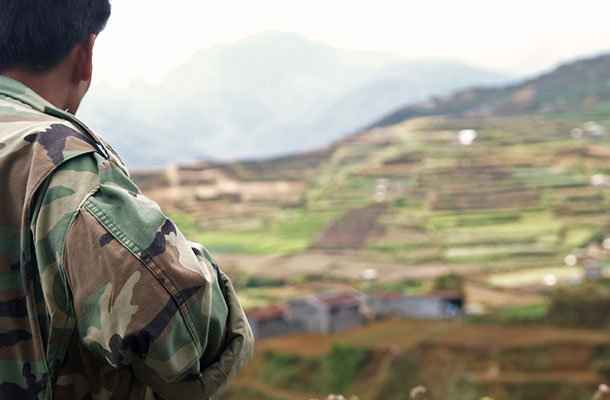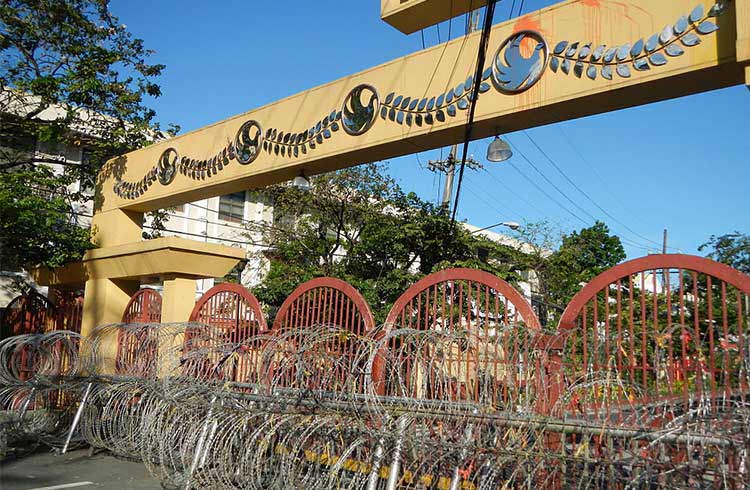Caribou Rate Limit Is Exceeded Try Again
Find out which provinces in the Philippines you should avoid before you book your trip. From military areas to kidnapping hotspots, here is everything travelers need to know.
 Photo © iStock/suc
Photo © iStock/suc While most people you will meet in the Philippines are super friendly and the destinations you visit are incredibly beautiful, there are a few areas that are unsafe for travelers. Here's a list of places to avoid, to make your visit to the Philippines safe.
- Military areas in the Philippines
- Terrorism risk in the Philippines
- Will I get kidnapped in the Philippines?
- Is the Philippines dangerous?
Military areas in the Philippines
The President of the Philippines declared martial law in the south of the country on 23 May 2017, following an attack on government facilities in the city of Marawi by ISIS insurgents. The military rule, superceding civil law, was in place for two and a half years and ended on 31 December 2019.
The military is an ever-present force in the Philippines, mainly due to the high risk of terrorism. Even when a ceasefire has been called, violence could flare up without warning. So, regardless of the current state of affairs during your stay, it's best to avoid these areas altogether.
Terrorism risk in the Philippines
Terrorism is perhaps the biggest threat to tourist safety in the Philippines and continues to be an ongoing problem.
The whole of the far south is a no-go zone: the areas of Mindanao, the Sulu Archipelago, and the Zamboanga Peninsula are all considered extremely dangerous and travelers are advised to stay away. The terrorist group Moro Islamic Liberation Front (MILF) has been blamed for numerous violent incidents, kidnappings, and frequent clashes with the Filipino security forces.
Spin-off terrorist groups, including the Abu Sayyaf Group and Jema'ah Islamiyah, have broken away from MILF, and are particularly dangerous. They are responsible for bombings which have resulted in property damage, injury and death. The more rural areas of the country, including the island of Luzon to the north, should be avoided as it has seen the increased presence of the terrorist organization, The New People's Army (NPA).
Over the past few years, terrorist acts, involving explosive devices in North Cotabato Province, Basilan, Isabela City, Jolo, Cotabato City, Makati and the Zamboanga airport, have resulted in 41 deaths, and severe injury to well over 100 more. Most of the bombings took place on public transportation, and in crowded locations including restaurants and cathedrals.
The unpredictability of terrorist acts makes them much more dangerous, so steer clear of the locations where they are more likely to occur.

Will I get kidnapped in the Philippines?
The risk of kidnap is especially hazardous for visitors because terror groups target travelers from overseas for the high-profile publicity, and the large ransom they can obtain from relatively wealthy families. Thankfully, these crimes are not widespread. The following locations carry a higher risk of kidnapping and should be avoided:
- Sarangani Province
- North Cotabato Province
- South Cotabato Province
- General Santos City
- Sultan Kudarat Province
- Lanao del Sur Province
- Lanao del Norte Province
- Iligan City
- Pangutaran Island.
Additionally, several foreigners have been captured in Zamboanga City, Pagadian City, Patikul and Jolo in recent years.

Is the Philippines dangerous?
If you stick to destinations that are popular among travelers, and follow the advice of your Government's travel advisory, you will have a safe and enjoyable time in the Philippines. Click here to read our personal safety tips to consider.
Overall, the southern region of the Philippines is dangerous, and should be avoided. As of January 2022, the US Government's travel advice to its citizens is Do Not Travel to the Sulu Archipelago, including the southern Sulu Sea, due to crime, terrorism, civil unrest, and kidnapping, or Marawi City in Mindanao due to terrorism and civil unrest. They have also issued advice to Reconsider Travel to other areas of Mindanao due to crime, terrorism, civil unrest, and kidnapping.
The US Government advice, repeated by other foreign departments including Australia's DFAT, is for travelers to avoid these areas, to review personal security plans, to remain alert to their surroundings, monitor local news reports for updates and be vigilant.
Kidnappings are difficult to predict and therefore can be challenging to avoid. Travel in groups and stay away from areas that have seen an increase in recent kidnapping incidents. There are plenty of beautiful locations throughout the Philippines that are trouble-free.
Listen to The World Nomads Podcast: Philippines
You can buy at home or while traveling, and claim online from anywhere in the world. With 150+ adventure activities covered and 24/7 emergency assistance.
Related articles
Source: https://www.worldnomads.com/travel-safety/southeast-asia/philippines/areas-to-avoid-in-the-philippines
0 Response to "Caribou Rate Limit Is Exceeded Try Again"
Post a Comment